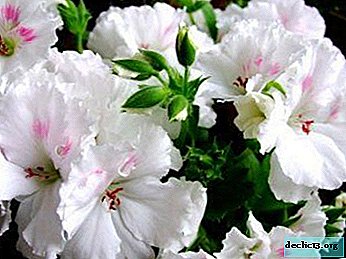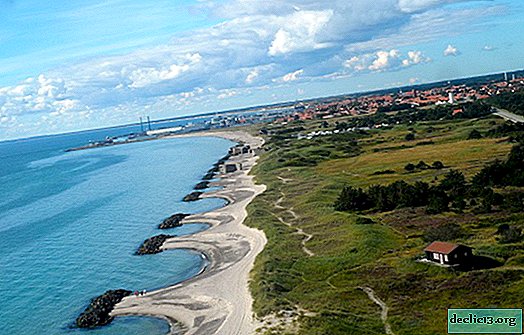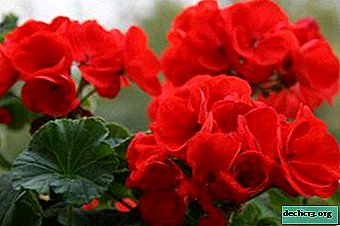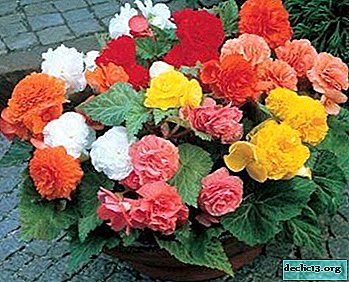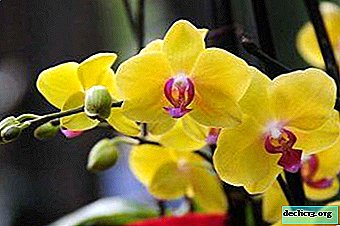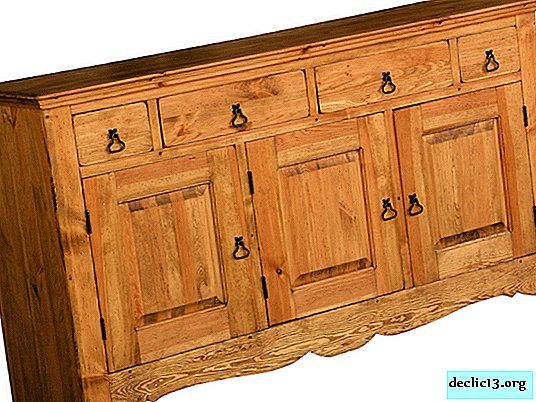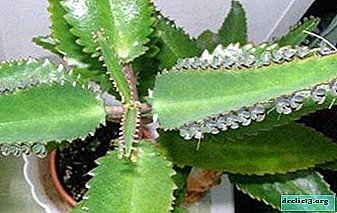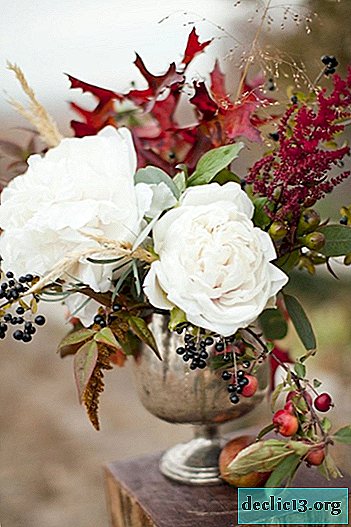Description and photo of a plant called Hoya multiflora. Home Care
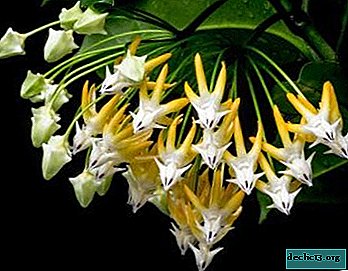
In the article you will learn about a houseplant such as multiflora hoya. Get acquainted with the description of this plant and its features.
You will also learn how to properly keep this beautiful flowering decorative bush at home.
See photos of the plant. Some interesting information about growing in open field.
Also information about possible pests and diseases of the flower. Consider the options for reproduction: cuttings, seeds and leaf method. Enjoy reading.
Botanical description and appearance
In nature, grows in the rainforests of tropical islands of Indonesia, Hindustan Peninsula and Australia. It has the shape of a bush. A young plant is self-growing with thin curly leaves. The length of the leaves is not more than 10 centimeters, the width is up to 6 centimeters, and the color is emerald.
Venation is clearly visible on the leaves, which appears only on mature broad leaves. The flowers resemble an umbrella. They appear on peduncles longer than 5 centimeters. The plant has elongated, tiny pedicels of emerald hue. Each umbrella consists of 16-22 flowers.
The petals are sharp and curved back. Has an amber-white shade. Inside are snow-white with small spots of pink. Also, the plant has a small root system.
Photo
Next, you can see the photo of the plant:




Home Care
Lighting
The place for the plant should be well lit. A flower normally perceives direct sunlight. However, this does not mean that caution will interfere here. Burns may appear on the plant from direct exposure to ultraviolet rays. Therefore, at noon, you need to provide the flower with diffuse lighting. To do this, it is enough to shade the window with paper, tracing paper, tulle or in any other way.
For the plant, the east or west side is perfect. There will be insufficient light on the north side and flowering may not occur. If a plant before appearing in your house was in a shaded place, then you do not need to immediately put it in a well-lit place. It is necessary to increase the amount of light incident on it gradually.
Watering
Summer watering should be moderate as the soil dries, do not let it dry. And in winter you need to water even less. The plant has excellent ability to tolerate a lack of moisture. But her overabundance can be fatal to him.
It is best to use rain or melt water.Before using tap water, it must be defended. Hard water must be softened before watering with peat or oxalic acid.
Temperature
Not sensitive to temperature conditions. It normally tolerates room temperature, feels good in the heat and easily tolerates coolness. However, sudden temperature changes are poorly tolerated. The average temperature in the summer is +18 ... +23 degrees, and in the winter +14 ... +18. Some species can overwinter at +10, but most are thermophilic and need to provide a warm winter.
In summer, it is recommended to take the plant to fresh air, but protect it from direct sunlight.
Priming
Soil should be selected according to the following properties:
- sour and neutral;
- loose;
- breathable;
- excess salt.
To increase nutritional value use humus.
The best soil option should consist of:
- perlite;
- tree bark;
- pieces of peat;
- coconut fiber.
Pot
 Choose a pot for this plant should be smallso that the roots fill all the free space. In this case, it will bloom for a long time and plentifully. If you want the plant to gain more green mass, then choose a slightly looser pot. The material from which the pot is made can be the most diverse and has no restrictions.
Choose a pot for this plant should be smallso that the roots fill all the free space. In this case, it will bloom for a long time and plentifully. If you want the plant to gain more green mass, then choose a slightly looser pot. The material from which the pot is made can be the most diverse and has no restrictions.
In a plastic container, the plant needs to be watered less often, since moisture will not evaporate. But in clay, on the contrary, moisture evaporates quickly and the flower requires more frequent watering. In the case of choosing a clay pot, it is better to choose one that is covered with ceramic glaze. It will ensure the tightness of the walls.
But there is one important condition for all pots for hoya is the availability of good drainage holes. This is necessary so that excess moisture drains without leading to rotting of the roots. Yet the plant can be safely planted in bamboo hanging pots.
Top dressing
The procedure is carried out from mid to late summer once every 3-4 days. Gives abundant flowering after nutritious fertilizers and top dressing.
Large fertilizers are best suited for top dressing:
- micro;
- saline;
- nitrogen;
- phosphoric;
- potash.
Pruning
The procedure is carried out so that the plant shrubs. To do this, cut off the top of the central trunk after the fourth sheet has appeared. Pruning is performed every year in the fall, after flowering is completed.. Do not touch short shoots when pruning; flower stalks may be planted on them. With regular and proper pruning, you will get a lush bush and increase the number of peduncles.
Features of outdoor care
 In order to get a beautiful and flowering plant in the garden, you do not need to do something special. Outdoor care is no different from home care. It is necessary to observe the light regime, watering and top dressing. After propagation, you can plant the plant in open ground and produce the same care as in the room.
In order to get a beautiful and flowering plant in the garden, you do not need to do something special. Outdoor care is no different from home care. It is necessary to observe the light regime, watering and top dressing. After propagation, you can plant the plant in open ground and produce the same care as in the room.
- The main thing when landing is to choose a place with good lighting, but without direct sunlight.
- Watch the watering of the plant, not forgetting about fertilizing.
- Also carry out spraying, which Hoya really loves.
- Check the appearance of the plant to avoid pests and diseases.
Diseases and Pests
The plant is susceptible to infection by such pests:
- aphid;
- spider mite;
- scale insects;
- whiteflies;
- mealybug.
Diseases due to improper care:
- with a lack of nitrogen, the leaves will become pale;
- at too low a temperature, dark spots appear on the leaves;
- due to excess moisture, the roots rot;
- when watering with cold water, the plant discards leaves.
To save, it is necessary to eliminate errors in care.
Growing Features
Reproduction methods:
- cuttings;
- sheets;
- seeds.
Cuttings
 The easiest and most reliable way. But you should take into account the age (it must be mature, but not lignified) and the size (no more than two pairs of sheets) of the handle.
The easiest and most reliable way. But you should take into account the age (it must be mature, but not lignified) and the size (no more than two pairs of sheets) of the handle.
The procedure begins with cutting the cuttings. To trim, retreat a couple of centimeters from the node and cut. Then root the stem in one of these ways:
- Immediately in the substrate (soil temperature + 20 ... +25) - for this we prepare a breathable moist soil in which we place the stalk and after 10 days the roots appear, and after 14-21 days you can plant in a pot or open ground.
- In water (temperature +22) - wrap a container of water with foil, make a hole for the handle on top, lower it into water, put on a loose plastic bag and after 14 days we get the roots. Then the plant is immediately planted in the ground.
Seeds
Seeds should be well dried. Such cultivation is complicated by the fact that it is difficult to find good planting material.We sow in suitable soil and after 7 days we get seedlings. When the first sprouts appear carefully monitor the humidity: do not fill and do not allow the soil to dry out.
From the leaves
The most difficult and longest way to grow. It is best to take the leaves of plants that live in the natural environment. The leaf is planted in loose soil at an angle of 45 °. After 2-3 weeks, the roots will appear.
The problem with this method is that the leaf that has taken root may not sprout for several years. You can speed up this process with the help of a special drug that is dripped onto the base of the sheet.
Conclusion
Hoya multiflora - unpretentious plantwhich does not require special care. But in return, it is ready to please its owner with a well-groomed, beautiful bush and beautiful flowering. You will never regret your decision if you start growing Hoyu.

